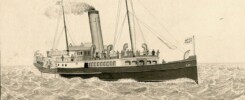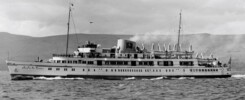As we saw last month the late Stafford Ellerman’s Uncle Lewis and Auntie Celia Wood were inveterate travellers on ships of all sizes including P & O liners, cross Channel ferries and coastal excursion steamers from before the First World War up to 1953. The accounts of their trips written up by Lewis make fascinating reading. He was there. He saw it. And the minute detail he recorded provides a wondrous window into a world now long gone where sometimes not everything always went smoothly and according to plan.
We saw last month that on a trip in June 1949 on the Royal Daffodil, then little more than a decade old, she experienced engine trouble on the way back from Margate to Gravesend and was very late back as a result. On another day in 1947 Lewis recorded that he and Celia went down to join Royal Daffodil at Gravesend in the morning only to be informed that the trip was cancelled. The evening before as she left the pier to go out to the buoys for the night the engines were started before the stern rope was back aboard which had resulted in the hawser being sucked into, and wrapping itself around, one of the propellers. As they stood on the pier that morning pondering what to do with their aborted day out they had the pleasure of watching Royal Daffodil being towed away to drydock to have it removed.
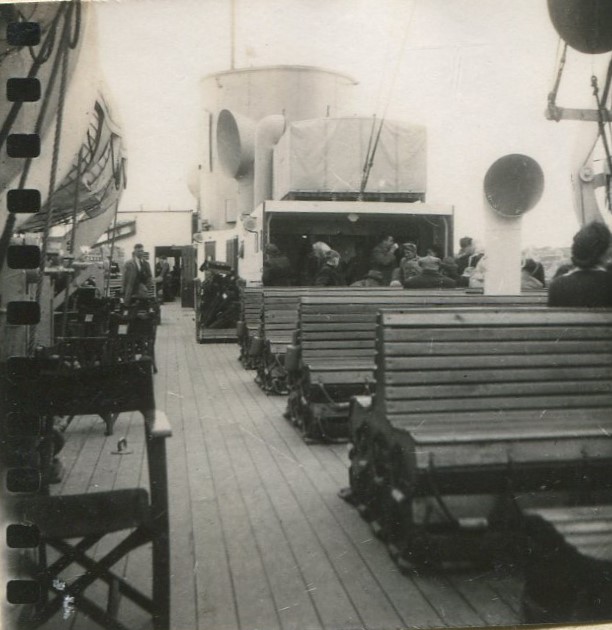
And in August 1948 they were aboard the brand new Royal Sovereign, which had just started a few weeks earlier fresh from Denny her builders, for a trip from Tower Pier to Gravesend and Margate where she arrived at 2.10pm fifty minutes behind schedule.
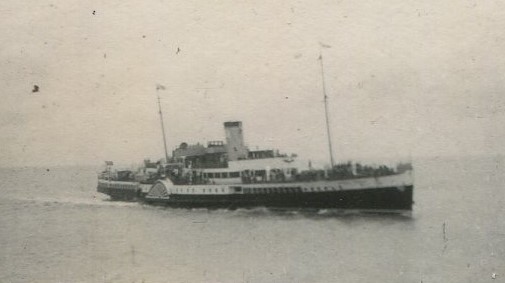
So long did she take punching a strong flood tide on this outbound trip that the paddle steamer Royal Eagle, which had left London forty minutes after her and called at Southend to pick up and set down passengers along the way, had already caught up with her by Margate and had to wait for her to vacate the berth.
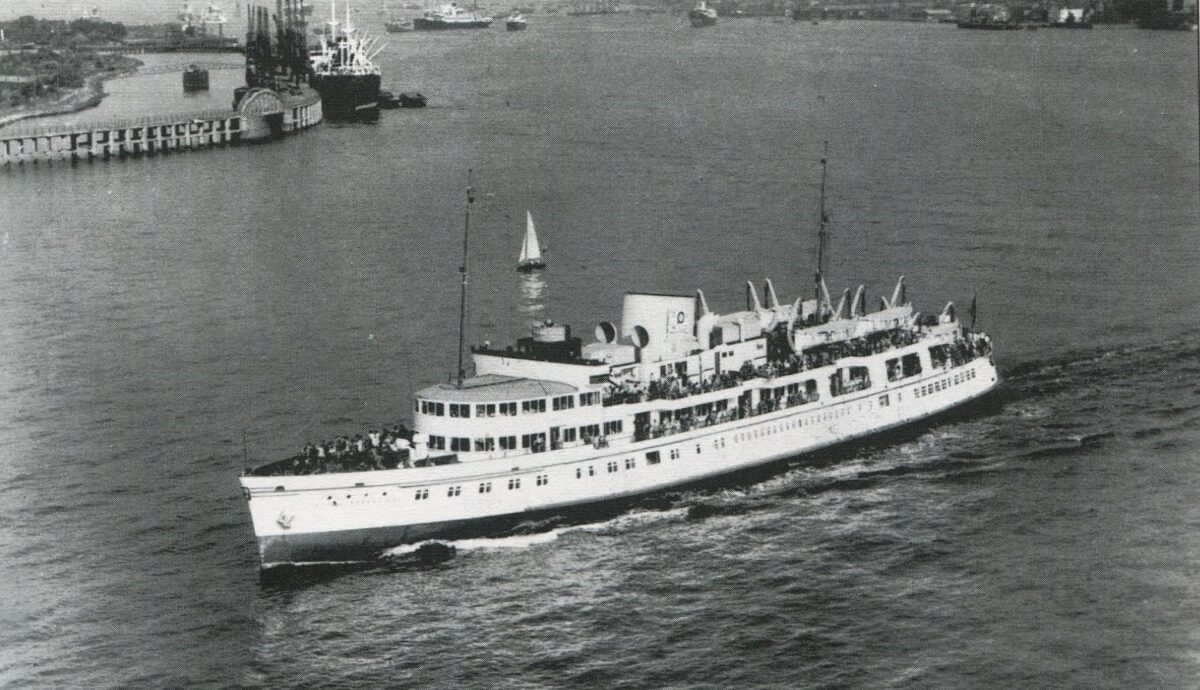
That day also reveals an insight into the sheer volume of traffic still wanting a trip down the London River to the seaside coast in the immediate post Second World War era. Lewis recalled that when they arrived at Tower Pier shortly after 8am the GSN officials were already marshalling the intending passengers into three separate and already long queues. One was for the Golden Eagle departing at 8.15am for Clacton. The second, which they joined, was for Royal Sovereign’s trip due away at 8.40am to Gravesend, Margate and Ramsgate. And the third was for Royal Eagle’s 9.20am departure for Southend and Margate. Royal Sovereign could carry 1,783 passengers, Royal Eagle 1,900 and Golden Eagle slightly less. That’s a potential combined passenger capacity, when the going was good, in excess of 5,000 to be marshalled and boarded safely onto these three ships in a period of little more than an hour between 8am and 9.20am at the start of the day. That’s a lot of people wanting a day out to the coast.
An excursion from London down the Thames was then not the only day trip opportunity to be had on the water for a London and Home Counties based clientele. The railways were in on the act too and provided combined rail, sea and river excursions all over the place as well. We saw in a post last year how the Southern Railway offered a combined ticket in the 1930s on their new electric trains from London to Brighton to connect with P & A Campbell’s paddle steamer rides to the Isle of Wight. And in the spring of 1936 Uncle Lewis noticed in his local Pickfords in Woolwich a handbill advertising ” A Unique rail and steamer cruise to the Highlands and Islands”. Out on a through train from Euston to Oban overnight on Friday 10th July. All day Saturday 11th sailing around Mull on MacBrayne’s Lochfyne with time ashore in Staffa and Iona. And then back again overnight on the Saturday to be home in London first thing on Sunday morning. “1,100 miles all for 35/- third class”. This scales up to about £98 in today’s money. If required third class sleeping berths were available at a supplement of 7/- each way which would have added another £40 to the fare in today’s money. Without that added luxury you just got a seat in a third class compartment on the train and had to do your best to get whatever sleep you could sitting up. But for many this was an exciting adventure with the overnight train ride at the very heart of the overall experience.
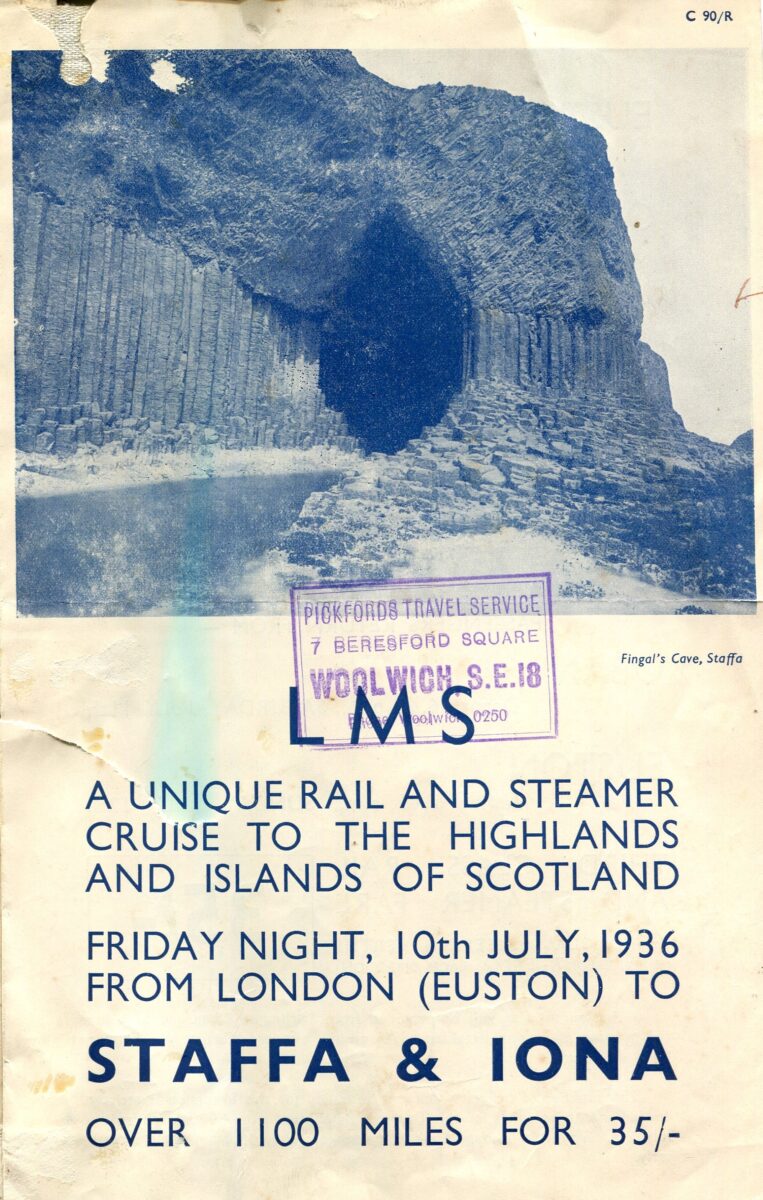
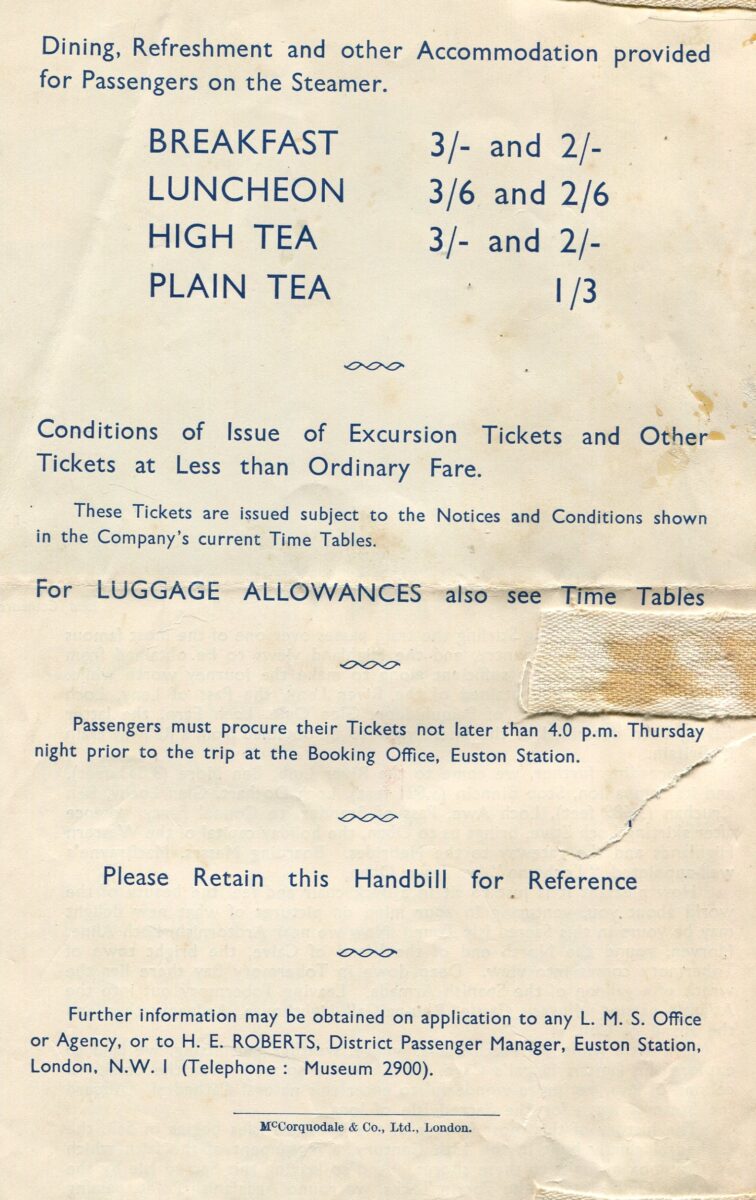
The tickets were booked. The day came and to “to wash, dress and rest in anticipation of a tiring night journey” as Lewis put it in his journal, he took leave from his work as a civil servant at the Royal Arsenal Woolwich from 2.30pm to 5pm. Clearly they were not short of money and were better off than many in order to be able to take trips like this but they were careful. And for the outward train ride to Scotland only Celia was booked into a sleeper with Lewis deciding to save cash and slum it sitting up all night in an ordinary third class compartment.
They hadn’t reserved a seat for him so they left home early to be at Euston in good time where they arrived at 6.45pm for the 7.30pm departure. They found Celia’s berth in a sleeping car and Lewis found a middle seat for himself in a compartment in which, he recorded, “were two young men in the window corner seats and the other two were reserved.” He also noted that “At 7.20pm a long train left the next platform for Crewe, Carlisle and Inverness. We watched it leave with its luxurious dining cars and their inmates studying menus in front of white tablecloths and polished tableware”.
There were no such luxuries on their 7.30pm departure which pulled out of Euston on time. They passed the Post Office Radio Station at Rugby around 9pm and called at Crewe at 10.30pm where one of the coaches was uncoupled for onward transit elsewhere. Lewis recalled “The guard came along looking for spare seats and brought with him a pair who had had to move out of that carriage. They settled down but the other two occupants and myself did not feel so pleased. It was a long night with periods of restless sleep during which a young lady came in from another compartment and two of my fellow passengers tried to teach her the Australian card game Rummy.”
By 3am the sun began to come up and when they arrived at Stirling at 4am for a protracted stop “it was daylight, quite bright, very clear with no sun nor rain.” They had hoped to take breakfast on the train but although this was available all the seats in the dining car were taken when they went to look and so they arrived on the quay in Oban at 7.30am feeling hungry.
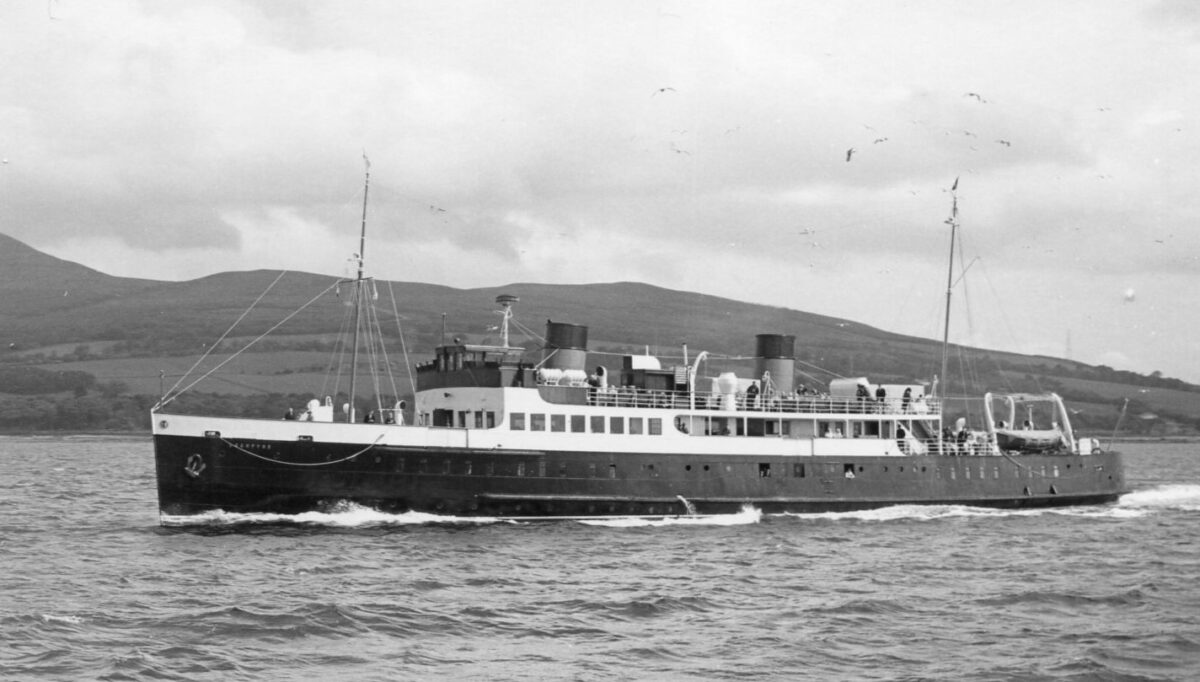
The handbill had advertised that the trip round Mull would be on the Lochfyne, which was berthed alongside the quay when they arrived.
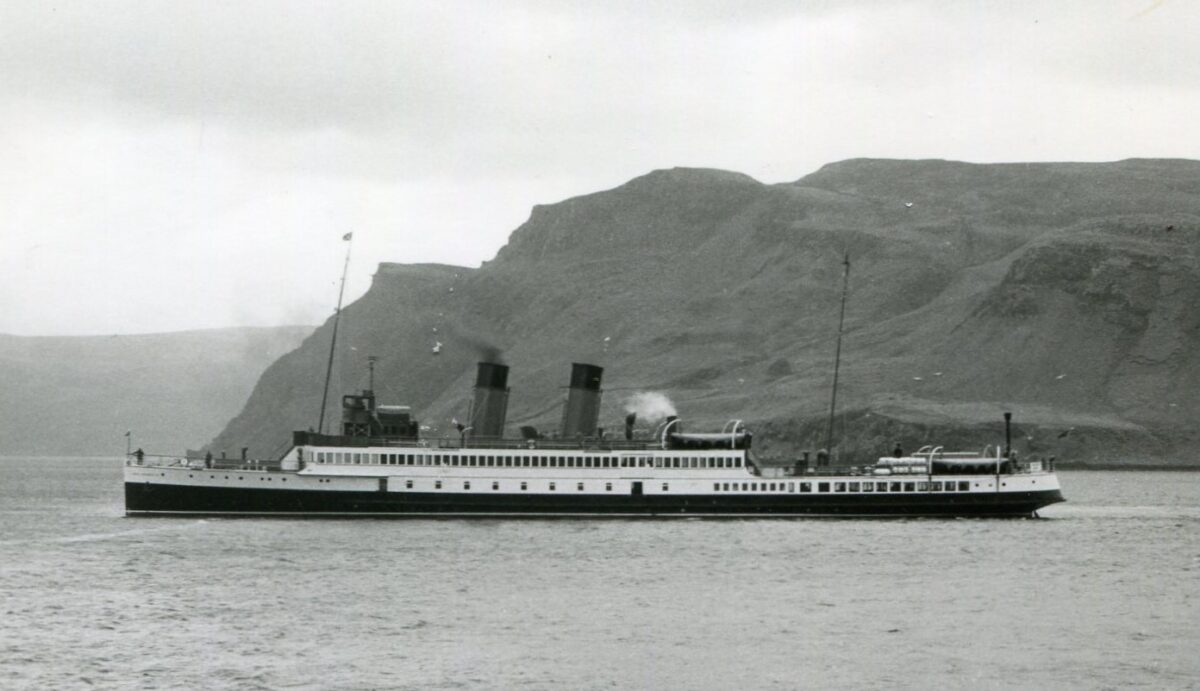
However they discovered when they tried to board her that they would be going on the King George V instead which had only recently been acquired by MacBrayne for their services from Oban.
Built in 1926 by Denny for Turbine Steamers Ltd she had been intended for the longer Clyde routes, particularly to Inverary, and sometimes to Campbeltown, and was pioneering in terms of passenger comfort and machinery. She had much more covered accommodation, dining and refreshment facilities than any previous Clyde steamer. And she had an experimental high pressure geared turbine installation served initially by two water tube boilers with superheated steam running at a very high pressure of 540psi. To put that in perspective KC’s boiler pressure is 120psi. Most of the Swiss paddle steamers today run with a pressure of 150psi. Some were higher. 180psi was not uncommon. 540psi is way up there in the pressure stakes. That’s more than four times the pressure in KC’s boiler.
There are swings and roundabouts between the benefits and downsides of fire tube boilers, where the water is within in the boiler shell itself, versus water tube boilers, where it is in tubes within the boiler, and different engineers have different opinions on this. Whatever the case King George V’s original high pressure water tube boilers can’t really be described as a success. Only one year into their use there was a serious accident which led to the death of two of her stokers in 1927. Such was the damage and unhappiness with her plant that she was re-boilered in 1929 just three years after completion. And around the time that she was acquired by MacBrayne in 1935 there was a complete review of her machinery with the two high pressure water tube boilers taken out and replaced with one larger double ended fire tube boiler running at a more modest 200psi. At the same time her high pressure turbines were altered to accommodate this new lower pressured boiler.
That is the guise in which King George V had been freshly refitted when Uncle Lewis and Auntie Celia boarded her at Oban at 8am on the morning of Saturday 11th July 1936. Their first thought was breakfast, so they took their seats in the commodious dining saloon. King George V developed a reputation for quality catering in her career at Oban. There she was serving a more moneyed clientele. All the social classes travelled on the Clyde steamers at one time or another. But the Western Isles were, generally speaking, more the preserve of the better off apart of course from the locals who were by definition fewer in number than in the industrial hinterland of the Clyde. And starting each day, and returning each evening, to Oban meant that she could retain a better quality of locally based catering crew and take delivery of fresh ingredients every day from the local butcher, baker and greengrocer.
After breakfast Lewis decided to have a shave so made off for the gents. A second train carrying passengers arrived at 8.30am and at 9am they were off passing as they left two large and distinguished private yachts, one flying the blue ensign and the other the white ensign signifying that her owner was a member of the prestigious Royal Yacht Squadron at Cowes.
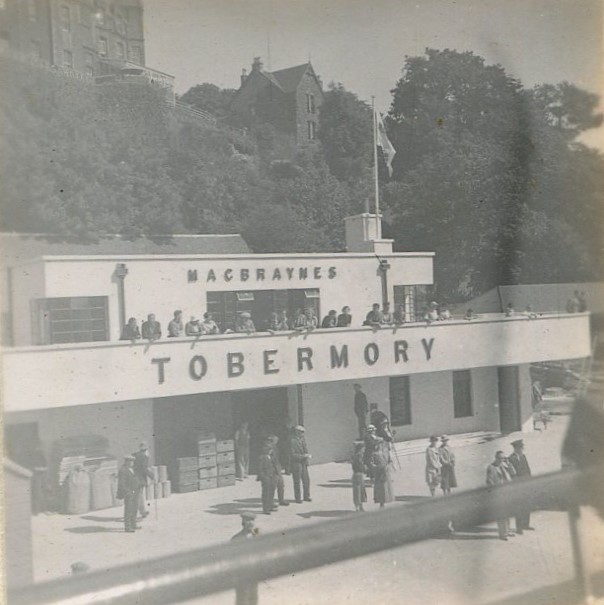
Around 11.30am they called at the MacBraynes Pier at Tobermory where some baggage was unloaded. Then they were off again around the north west coast of Mull into the open sea. Lewis and Cela went down to the dining saloon for lunch and Lewis recorded that “The ship began to be lively, rolling and pitching” as they sailed on to the Isle of Staffa where the anchor was dropped.
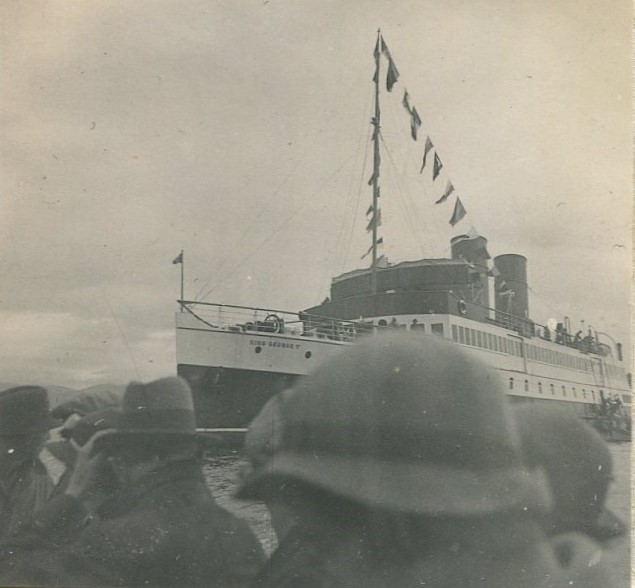
Small launches came out to ferry the passengers ashore and Lewis recorded “watching our step we boarded one of them and were taken to the island. Looking back at the ship we saw that she was rolling considerably in the trough of the sea”
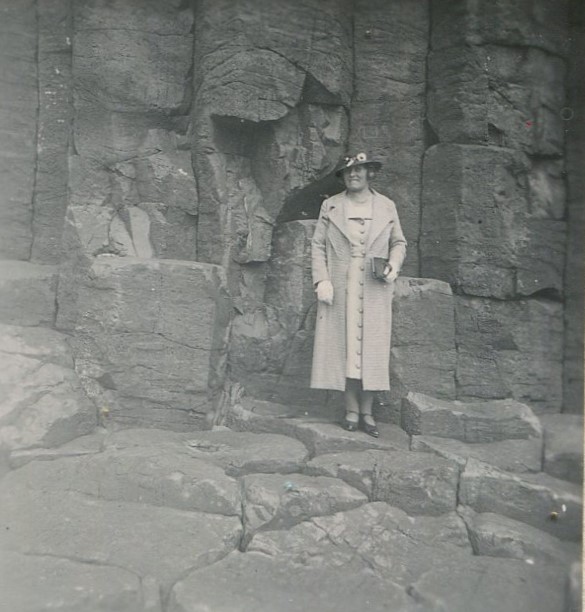
Along with other passengers they ventured inside Fingal’s Cave and Celia had her picture taken next to some of the tall basalt columns.
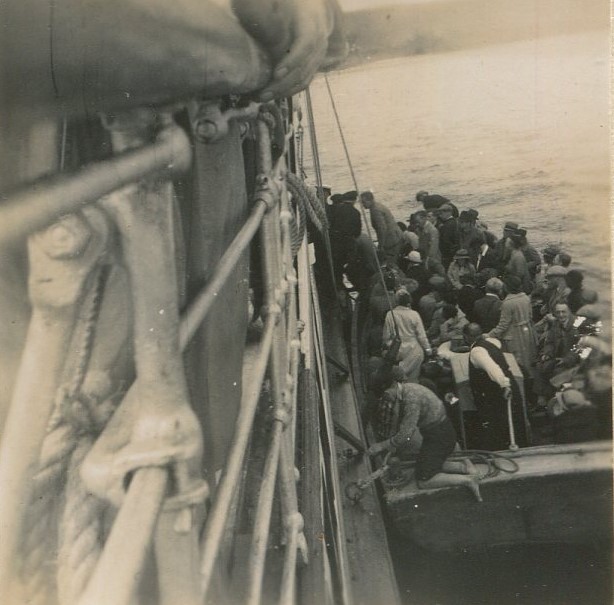
Then it was back to the ship. The anchor was weighed and a course set for the next destination, the Isle of Iona. Lewis recorded “As soon as we left the Lee of Staffa the ship felt the effects of the ocean swell pitching and rolling somewhat worse than the first stretch from the northern coast of Mull to Staffa. It took toll of some of the passengers and others did not appear to appreciate it. The ship went into a sound between Mull and Iona. The anchor was dropped and we disembarked in launches as at Staffa.”
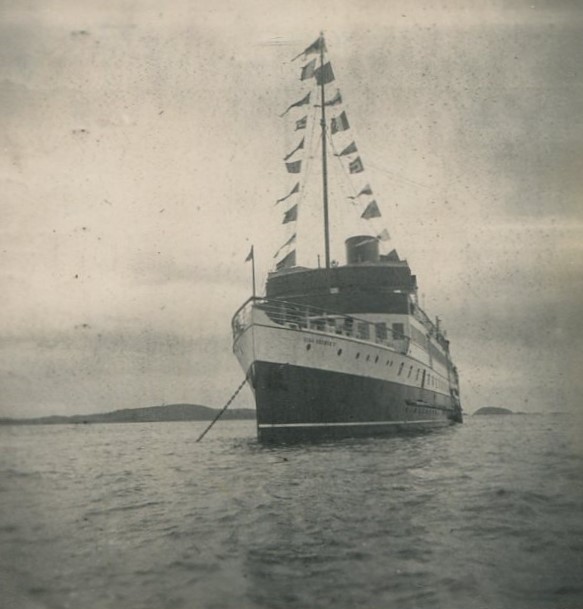
He went on “When we got ashore instead of being sunny with a fresh breeze there was a complete change in the weather with it being very sunny with no breeze at all and it was extremely hot. We visited the Nunnery and the ruins of St Oran’s Chapel, once the Cathedral of Iona, before returning to the ship.”

He went on “We returned by the Ross of Mull. This was to me a most interesting part of the run with the ship steaming between rocky islets so close that one could throw a stone from either side of the ship to the rocks. Large rocks were passed very closely and we saw small coves with beaches of silver sand before entering the Sound of Kerrara and onwards back to Oban where we docked at 6.15pm.”
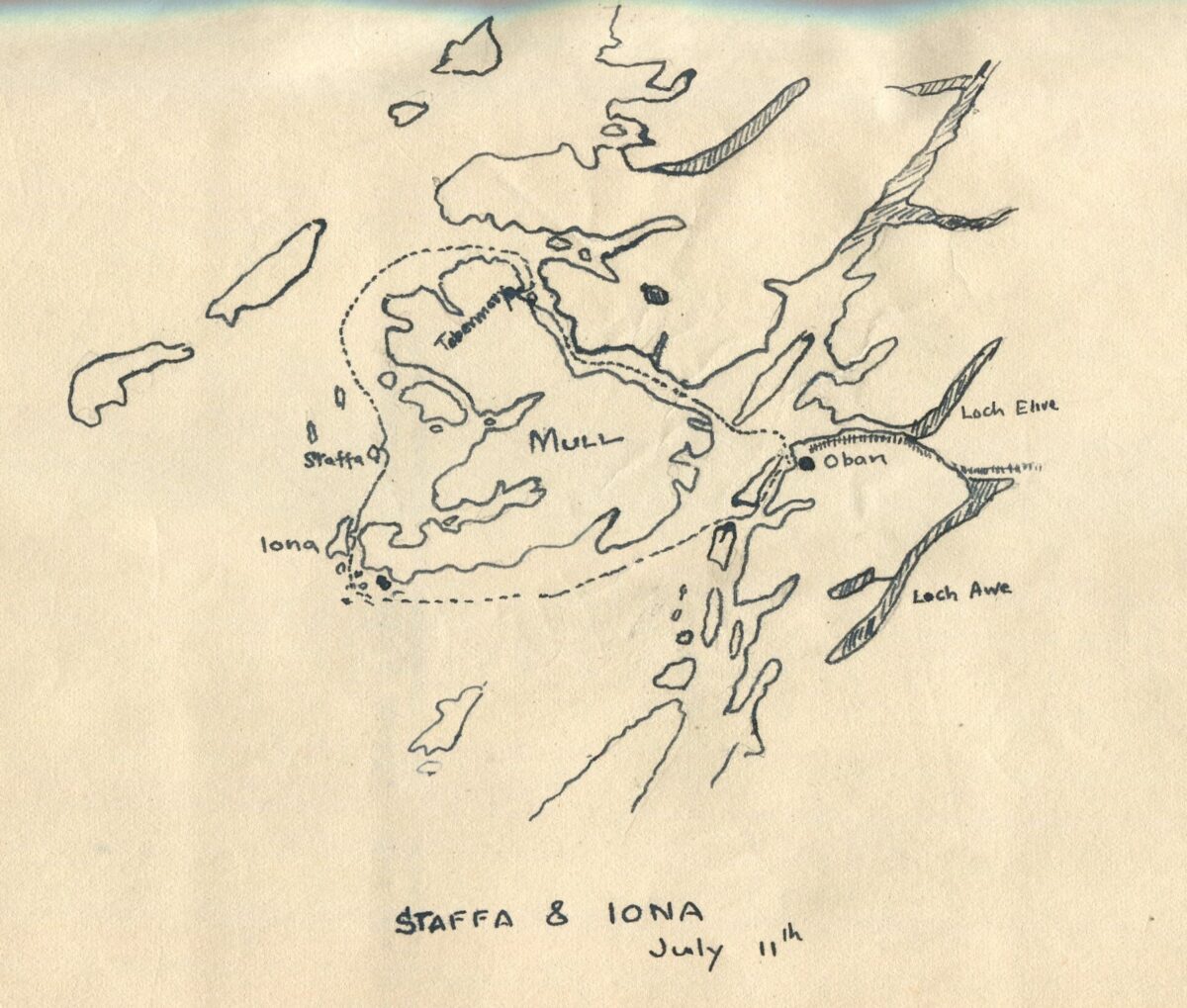
Lewis continued “The first part of the train back to London left Oban at 6.30pm. The second part, by which we travelled, at 7pm. The day had been all that could be desired. Just before we left a gentle rain started to fall. We were able to see two engines pulling the train around sharp curves then a minute or two later the curve was in the reverse direction. We arrived at Stirling at 10.30pm. Turned in soon after.”
For the return trip Lewis had booked himself a sleeping car berth as well as one for Celia so this would not be another night of sitting up, trying to sleep and being prevented from nodding off by fellow travelling companions trying to teach a girl how to play rummy. They were awoken by slamming doors at Carlisle but then slept through to 5.30am when the train stopped at Crewe. Then it was onwards to Euston where they arrived at 8.50am. They caught the Northern Line underground to the Strand, had coffee and a roll in Charing Cross railway station and arrived back at their “home” station at Woolwich at 10.15am. As Lewis recorded “That’s over 1,100 miles travelled between 5.30pm on the evening of Friday 10th July and 10.15am on the morning of Sunday 12th.”
And it made an exotic alternative “day” out for a London and Homes Counties based clientele to a steamer trip down the Thames to Southend, Margate or Ramsgate on Royal Sovereign, Royal Eagle. or Golden Eagle. More expensive? Yes, it was. But you got a lot more miles for your shilling.
Coda
Here are a few snaps taken by a 14 year old paddle steamer lover with his little box Brownie camera on 4th November 1965 of King George V with Waverley berthed alongside in the Albert Dock at Greenock. They are a little bit blurry I am afraid but they do record a snapshot in time. And they do show just how big King George V was. She even makes Waverley look small.
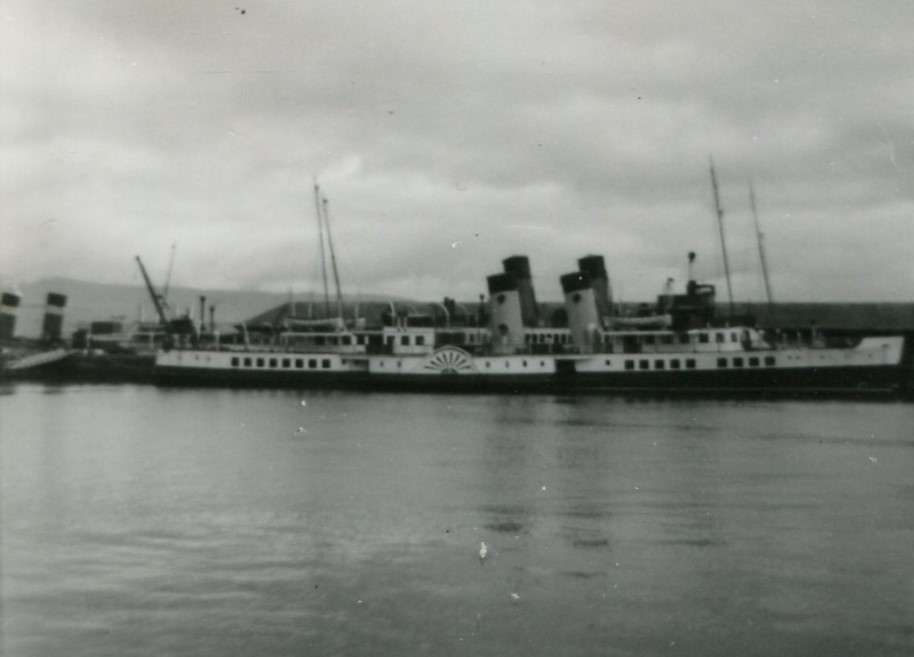
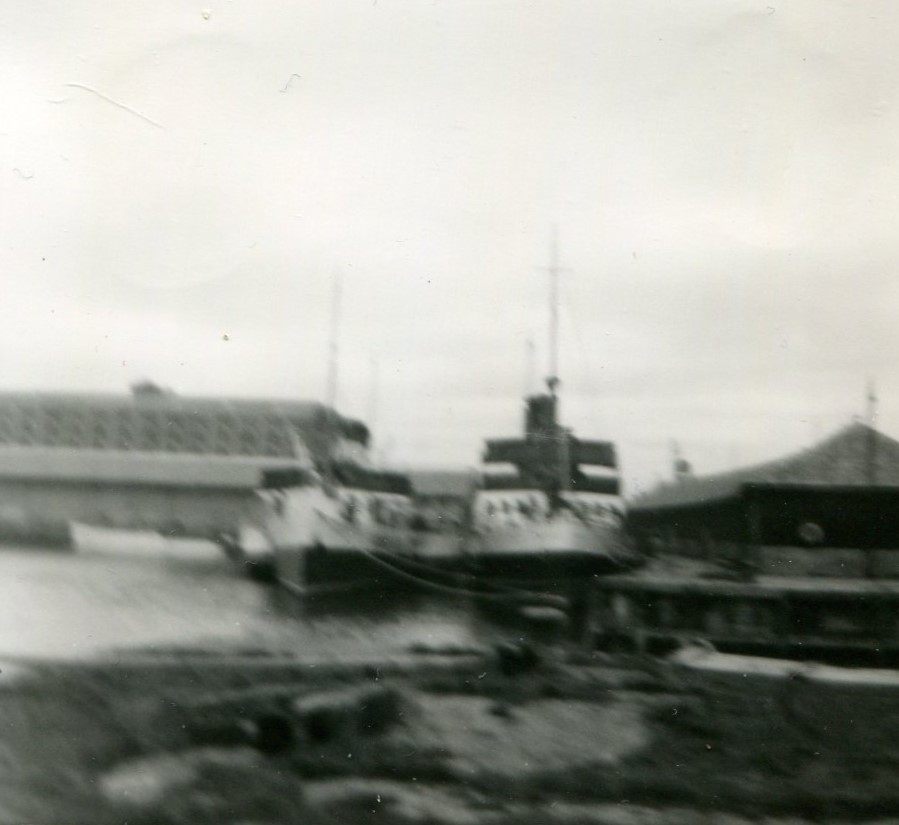
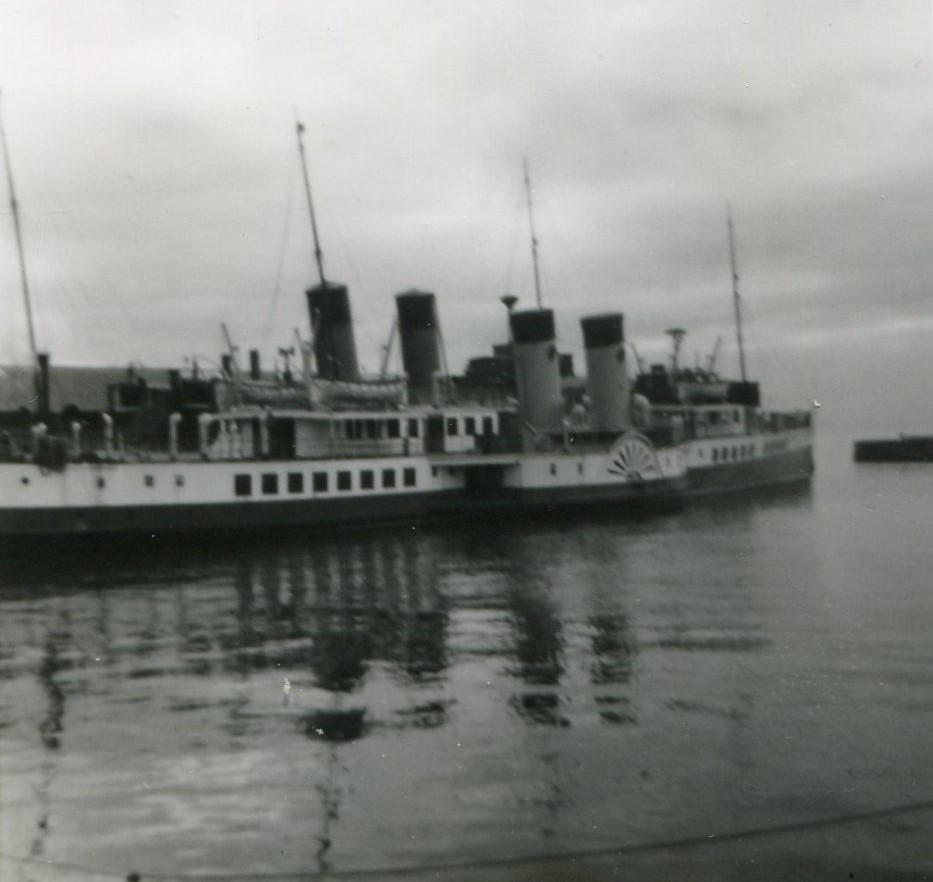
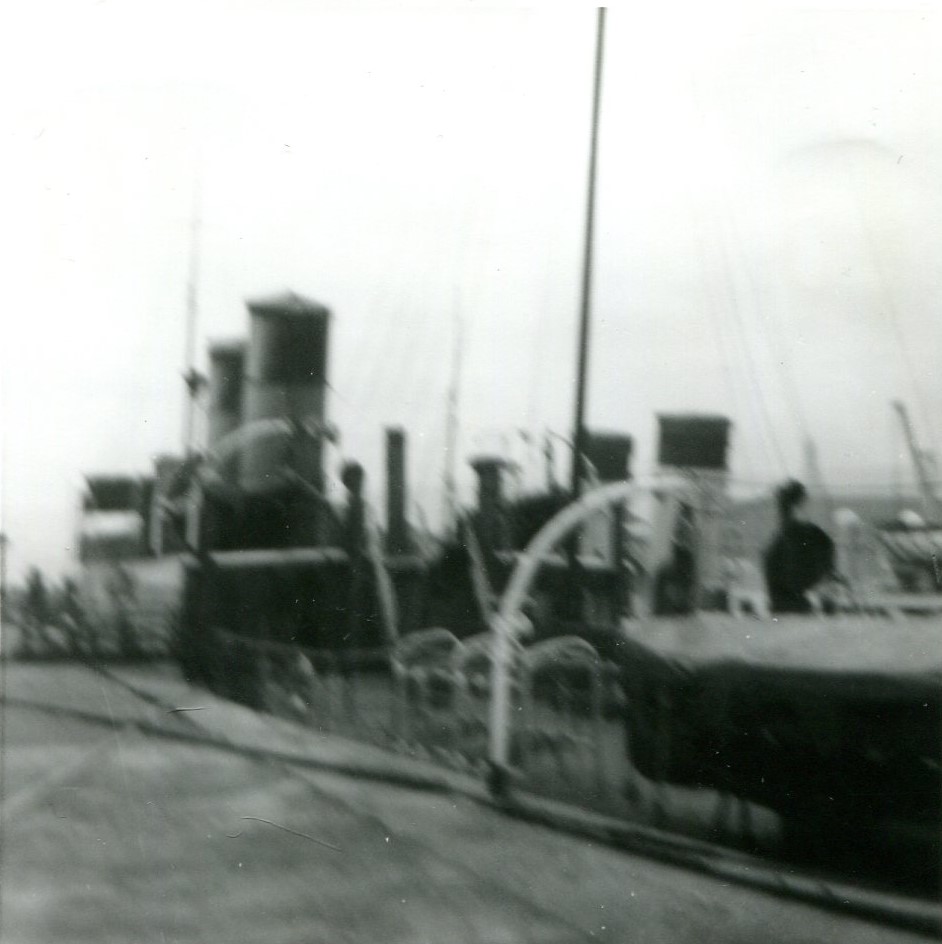
Kingswear Castle returned to service in 2023 after the first part of a major rebuild which is designed to set her up for the next 25 years running on the River Dart. The Paddle Steamer Kingswear Castle Trust is now fund raising for the second phase of the rebuild. You can read more about the rebuilds and how you can help if you can here.
John Megoran

